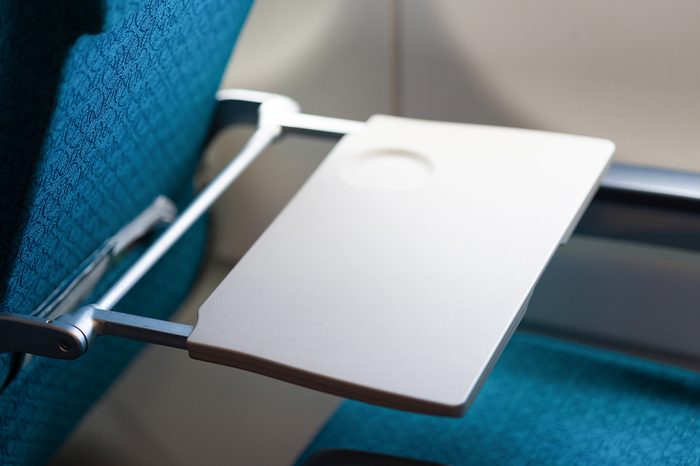
Put your tray table up before takeoff and landing
Takeoff and landing are two of the most critical phases of a flight. A 2017 report conducted by Boeing says 61 percent of fatal accidents from 2007 to 2016 occurred during the takeoff, initial climb, final approach, or landing. A secured tray table would clear a path for you and other passengers to evacuate in an emergency. “It’s actually a [Federal Aviation Administration] (FAA) regulation that all tray tables must be moved to the upright position before movement on the tarmac,” Morgan Johnston, JetBlue’s corporate communications manager, told Travel + Leisure. They might be unwritten, but these are 10 airplane etiquette rules you should always follow.
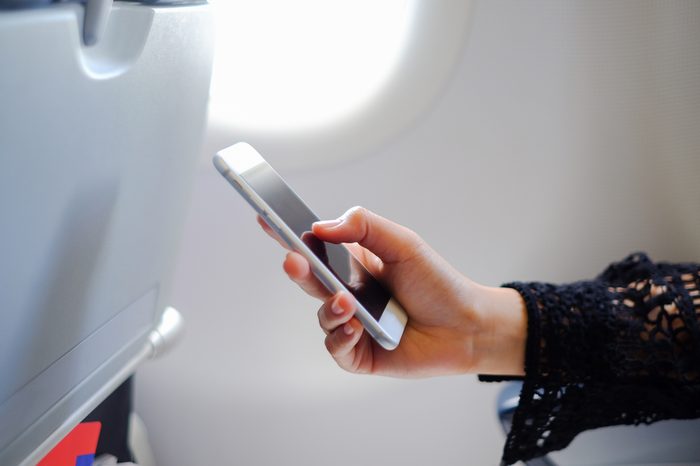
Electronic devices should only be on airplane mode during the flight
Since October 31, 2013, the FAA has allowed the use of electronic devices like iPhones and tablets on U.S. flights. Still, passengers aren’t allowed to call or text via a cellular connection, because the cell signal could potentially disrupt the airplane’s navigation instruments. Even though there’s little evidence of any danger, most airlines and the FAA continue to enforce this precautionary measure. “Aircraft electronics are designed and shielded with interference in mind,” Patrick Smith, a U.S. pilot and author of Cockpit Confidential, told the Telegraph. “To date there are no proven cases of a phone adversely affecting the outcome of a flight. But you never know.” Don’t miss these 40 secrets your airplane pilot won’t tell you.
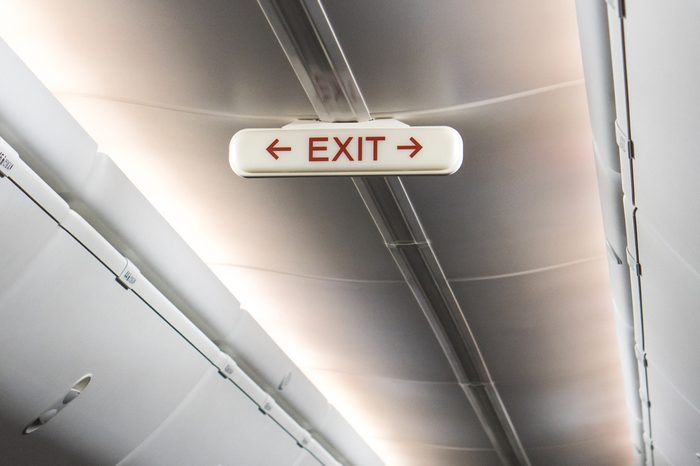
Only able-bodied adults can sit in the emergency exit row
Emergency exit seats typically have the most leg room to stretch out in. But with great comfort comes great responsibility: You’ll be tasked with helping other passengers get out of the plane in an emergency before you do. Plus, you need to meet the eligibility criteria to sit there. “Only healthy adults are allowed to occupy these seats, they are also required to read the safety card for emergency exits to make them prepared in case of emergencies to help the cabin crew,” aviation safety officer Saran Udayakumar told Quora users. Parents of little kids, children younger than 15, and people with a physical handicap are just a few of the passengers who don’t make the cut to sit in the emergency exit row. Don’t miss these 22 things your flight attendant won’t tell you.

The 3-1-1 liquid rule for carry-ons
For most people, the liquid rule for carry-ons is just another nuisance to deal with when packing. Passengers can only bring liquids in their carry-on under two conditions: bottles must be 3.4 ounces or smaller, and they must fit into a clear bag no bigger than one quart. This safety measure was instated in August 2006, after the U.K. government uncovered a terror plot to blow up flights between England and North America with an explosive cocktail disguised in soda bottles. After the incident, liquids were initially prohibited from carry-ons entirely. Since then, the Transportation Security Administration (TSA) and Department of Homeland Security (DHS) have conducted explosive tests to determine that liquids, aerosols, and gels are safe to bring aboard an aircraft in limited quantities. Plus, consolidating the bottles into one bag that you take out of your carry-on bag lets security officers clear the items quickly.
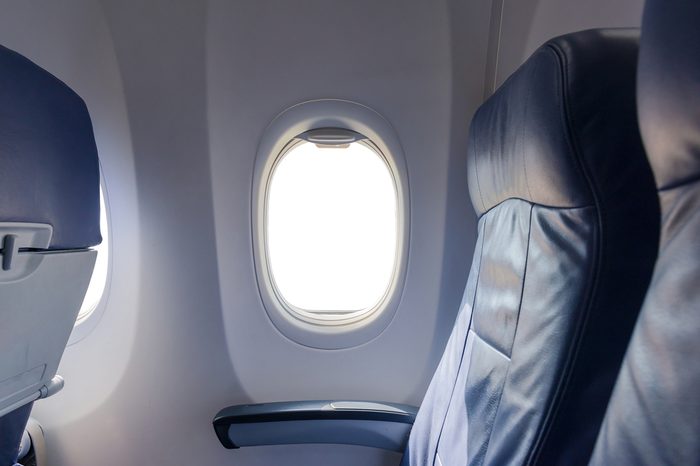
Window shades must be up during takeoff and landing
Shade-free airplane windows may give you stellar views of picturesque landscapes, but more importantly, they keep you safe. When you lift up the window shades, the plane cabin floods with natural light to help travelers orient their eyes to their surroundings, which is particularly helpful when the lights go out in an emergency. “In case of sudden emergencies, every second counts,” Udayakumar told Quora users. “If the shades are open, crew can easily see outside conditions to help them in planning the evacuation.” For instance, they might spot danger outside one door and point passengers to another exit. Learn about the little-known airplane feature that could save your life.
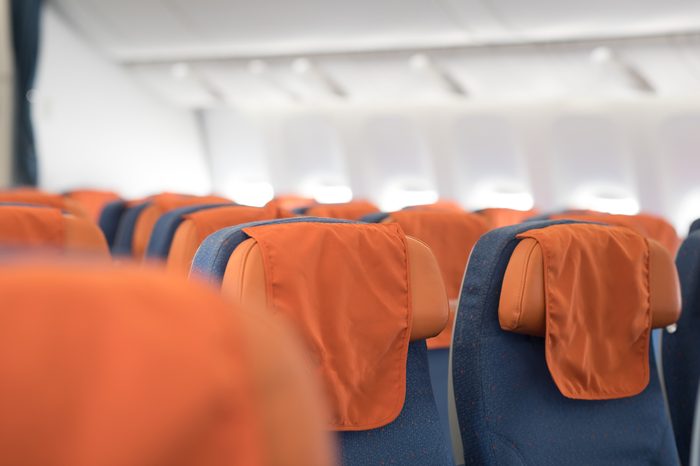
Your seat must be in an upright position before takeoff and landing
A reclined seat could easily slow down an emergency evacuation from a plane by blocking the person sitting behind you. It’s crucial that everyone can exit the plane in the quickest, safest manner possible, ideally in 90 seconds, according to FAA requirements. Plus, the more you’re leaning back, the harder it is to adopt the “brace position” used in emergency landings—and as mentioned, takeoffs and landings are when things are most likely to go wrong.
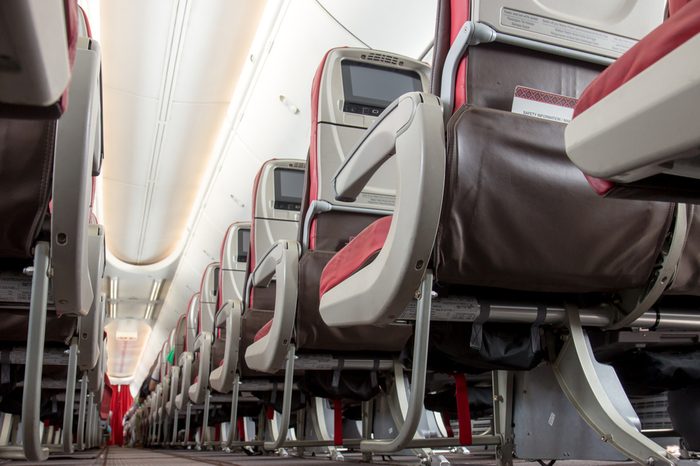
Stow your belongings under the seat before take off and landing
Listen to your flight attendant when he or she asks you to stow everything under the seat in front of you during takeoff. A harmless stuffed book bag on your lap could turn into a dangerous projectile if you’re plummeting from the sky rapidly. You’ll be surprised by these 7 hidden airplane features you never knew existed.
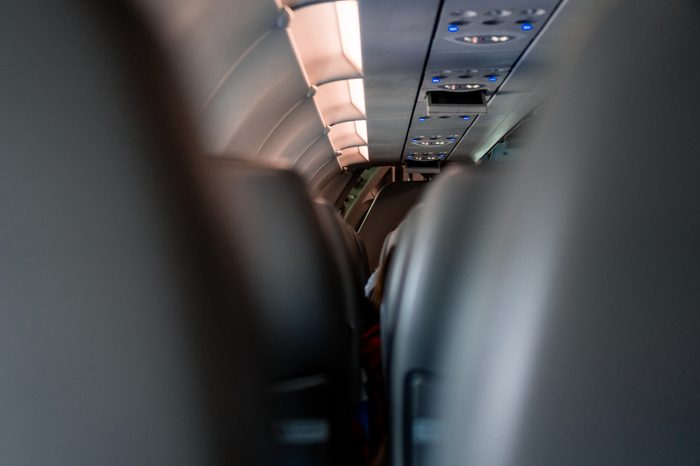
Dimming airplane lights before take off and landing
Much like raising the window shades during takeoff and landing, the dimming of airplane lights are also standard safety procedures that allow passengers’ eyes to adjust more quickly during an emergency evacuation. “Imagine being in an unfamiliar bright room filled with obstacles when someone turns off the lights and asks you to exit quickly,” pilot Chris Cooke told Travel + Leisure. Plus, if the power goes out or the cabin fills with smoke, your eyes are already adjusted to the low lighting, which makes it easier to see emergency lights in the aisle and exit signs.
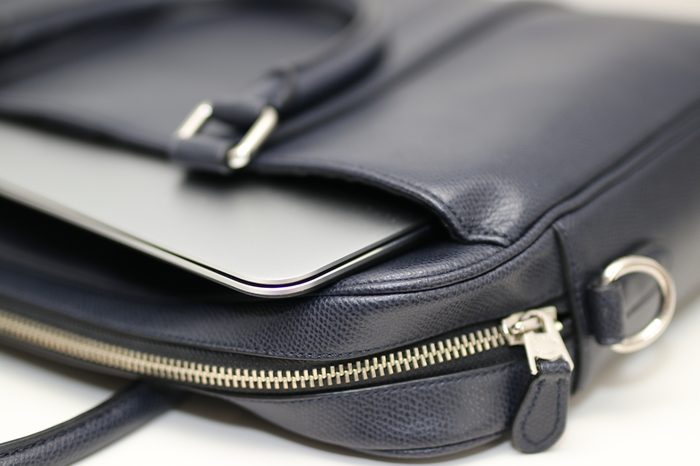
All laptops need to be taken out of carry-on bags at airport security check
Laptops are other likely places for hidden explosives. A laptop placed separately into a bin allows the screeners to get a clear look at a computer to determine if it’s hiding anything suspicious, according to the TSA. This rule also helps scanners get a better view of your carry-on bag without a cumbersome laptop getting in the way of the X-ray image. Avoid these other 18 things you should never do on an airplane.